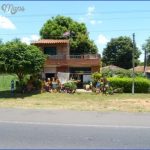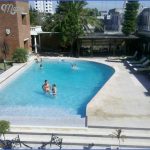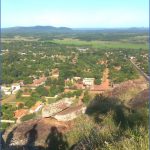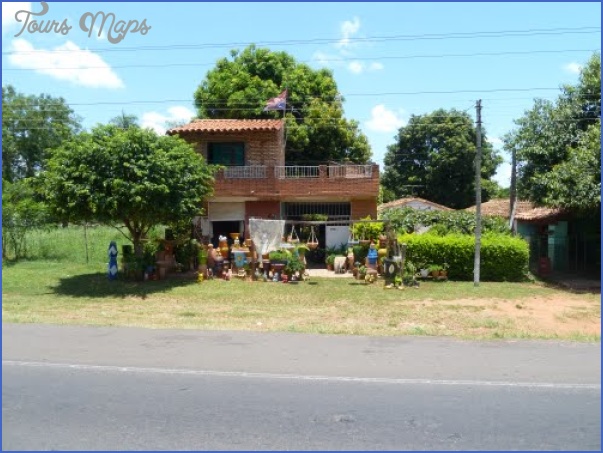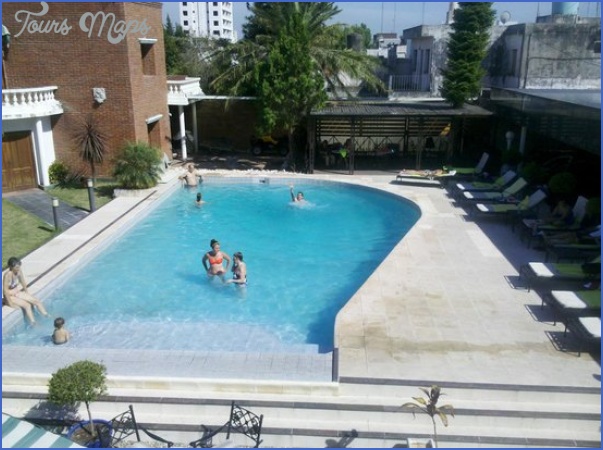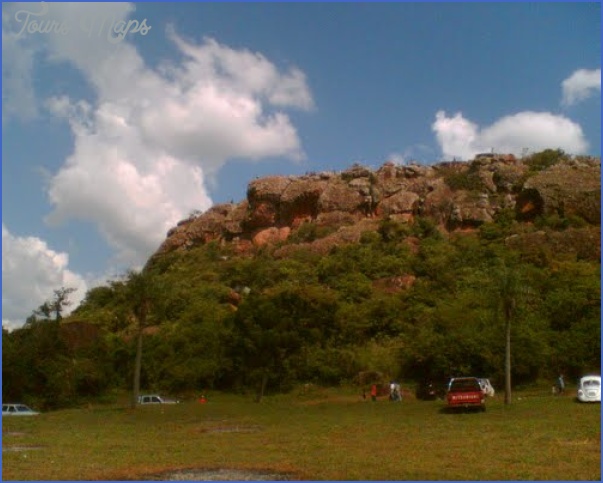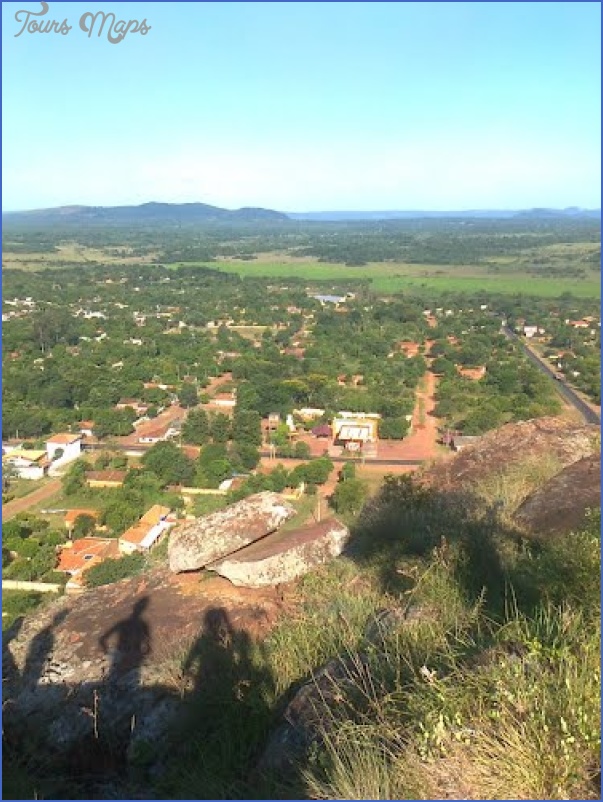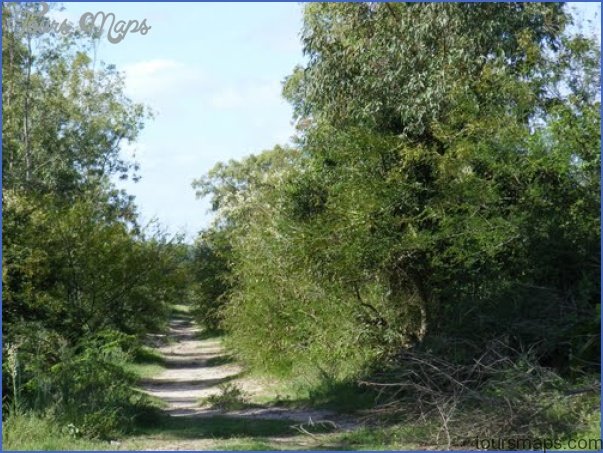As Dr. Francia left no clear successor, the years following his death were marked with uncertainty and a series of governmental changes. In 1844, Carlos Antonio Lopez was declared President of Paraguay. Much like his predecessor, Carlos Antonio Lopez proved to be a tyrannical dictator. However, during Lopez’s rule, Paraguay prospered and flourished.
Carlos Antonio Lopez capitalized on the wealth that Dr. Francia had amassed in the state coffers, opening Paraguay to international trade and investment. Turning to European experts to improve the country’s infrastructure, under Lopez’s regime Paraguay saw the creation of the country’s first iron foundry (La Rosada), shipyard, telegraph service, printing press, and newspaper. Perhaps most importantly, Paraguay became home to Latin America’s first steam-powered railway. Many of the large and ornate buildings standing in downtown Asuncion date from this period.
Under Carlos Antonio Lopez’s rule, Paraguay reached an economic highpoint. Yet despite its newfound economic prosperity, tense relations with Argentina and Brazil continued to loom like a specter over the nation’s politics. Both neighbors remained eager to determine lingering boundary disputes with Paraguay to their favor. The diplomatic failings of Carlos Antonio Lopez’s successor soon drove the prosperous nation into a devastating war.
The Steam Train
The steam-powered locomotive (tren a vapor) represented Paraguay’s biggest advance in infrastructure. The railway linked Asuncion to Encarnacion (a distance of 376 kilometers), stopping in numerous small towns along the way. In Encarnacion, the network connected via ferry to the Argentine city of Posadas where the railway continued to Buenos Aires. The railway was built and operated by English investors until 1959 when it passed in to the hands of the Paraguayan government. The train continued to carry passengers until 1999, though its importance greatly diminished as improvements to the country’s highway and public transportation system were made. Nowadays, the train is mostly defunct, leaving behind a series of dilapidated stations, isolated towns, and grass covered tracks. However, there are still ways to see and experience vestiges of this historical railroad system. The railway’s central station in Asuncion has been turned into a museum (see Museo Ferroviario) and a train known as the Tren del Lago operates between Asuncion and Aregua (see Tren del Lago). In addition, the original workshop where all the trains were serviced, still stands in Sapucai (see Taller de Trenes Train Workshop and Ferrocarril Presidente Carlos Antonio Lopez Museum).
Marsical FranCisco Solano Lopez & the Triple Alliance War
In September 1862, Carlos Antonio Lopez died, leaving his son Francisco Solano Lopez (known, due to his military rank of Marshal, as Mariscal Lopez) as his successor. According to legend, upon his deathbed Carlos Antonio Lopez begged his hotheaded son to rule with a pen instead of a sword. Instead, the new ruler took an aggressive stance on borders issues with Argentina, Uruguay, and Brazil. In 1864, Marsical Lopez sided with Uruguay and declared war on Brazil. From there, a domino effect took hold. Paraguay requested permission to cross Argentine territory in order to attack Brazil. When its request was denied, Paraguay also declared war on Argentina. In an ironic twist of fate, Uruguay, under a new government installed by Brazil, joined the war against Paraguay. The three enemy states signed a secret treaty, under which each swore not to enter into separate peace negotiations with Paraguay and not to suspend fighting until the Paraguayan government was overthrown.
Waged between 1865 and 1870, the Triple Alliance War had disastrous ramifications for Paraguay. Though large, the country’s army was poorly trained and equipped in comparison to the enemy’s troops. The majority of fighting took place in the southern department of Neembucu and spread north through the department of Cordillera and into the department of Amambay. Massive casualties forced the nation’s women, elderly, and even children on to the battlefields. In many instances, the makeshift troops defended their tattered nation with nothing more than simple farming equipment. Mariscal Lopez was killed on the battlefield on March 1, 1870, bringing the war to an end. By this time, more than half the population of Paraguay had been killed by a combination of enemy fire, famine, and disease. By most accounts, the male population was reduced by 90 percent. Historians disagree on exact death tolls but no matter what numbers, the war left Paraguay a broken nation. In addition to human casualties, Paraguay lost approximately 170,000 km2 of territory to Argentina and Brazil in the ensuing peace negotiations (see Rutherford B. Hayes, Paraguay’s Favorite American President), and was burdened with paying its victors significant war reparations.
The war’s aftermath and the country’s struggle to recover had long lasting effects on Paraguayan society. With only a fraction of the original male population remaining, the brunt of the country’s rebuilding was carried out by Paraguay’s women. To this day, many women remain at the forefront of the household, making economic decisions, and running cottage industries and family businesses. The crippled nation received no assistance from the victors of war. Argentine and Brazilian troops remained in Paraguay for several years enjoying the spoils of war, most of the time by force. This only worsened Paraguayans’ negative feelings towards Argentina and Brazil. For many, these feelings still exist today. In order to replenish the empty state coffers, the government turned to land sales. Over 50 percent of the country was sold off to foreign landowners. This caused foreign interests to wield disproportionate power over national interests, a pattern which remains an issue in modern day Paraguay. Politically, the years following the Triple Alliance War were marked by instability and the creation of the Colorado and Liberal parties, both of which still dominate national politics today.
Travel to Yaguarón Photo Gallery
Maybe You Like Them Too
- The Best Cities To Visit in The World
- World’s 10 Best Places To Visit
- Coolest Countries in the World to Visit
- Travel to Santorini, Greece
- Map of Barbados – Holiday in Barbados

